Boats without sailor
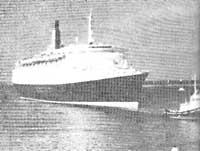
Two men working together on the Untzi Bridge met half an hour earlier. The Pasaia pilot arrived by boat and climbed the boat on a mud ladder. He asked the captain of the cargo ship in the waters of Pasaia:
"Have you been here before? ".
The captain refuses.
The pilot explored the bridge environment in search of the VHF radio. After requesting the depth of the boat and other data, he began to give orders. The ship "Lekeitio" (with a gross weight of 505 tons), when the captain had been leman, was fleeing to the docks:
"five stribadores" … "now in the middle of the boat, please" … "maximum speed" … "leave it slowly".
After passing the keel almost touching the bottom of the sea and crossing other ships that were headed to the sea, finally the ship "Lekeitio" was in the dock of the port. The pilot had completed his work:
"The boat is ready in place, sir. Free ties! ".
The VHF radio he used to talk to the skipper and the "Ainhoa" tug pilot went out with a bustle. Next to the rudder, on a shelf, there was a Txillardegi book, two cups (in which coffee was brought to the captain and pilot while working) and a pack of cigarettes. After leaving the slogan the captain signed with the pilot the “sheet of pelotaris”. Then, they greeted each other and went down to the ground to escape the noise that would be generated until the scrap of transport to Sweden entered.
It was a pilot as he promised the experience and only so were ships handled in high-traffic ports so far.

1,600 sea or river port pilots are authorized to drive any boat that leaves the port or enters its enclosure. They can carry or extract a small barge or a huge oil tanker. These pilots know the seabed, the tides, the latest changes and the dangers of this port. On the other hand, they know the behavior of each boat and can use the most advanced navigation tools, including the autopilot.
In the last two or three years it has been a great deal of knowing the autopilot, something that has been essential for port pilots. In fact, almost all boats over 300 tons of crude oil and many others have the possibility to drive automatically.
Normally, the automatic pilots have been used in open sea, but outside the influence of the port authorities on the coast, the pilots themselves have pretended to oppose the type of driving, automatic or manual.
The European Association of Marine Pilots sent a call to the local authorities in its district. They demanded that direction not be legally regulated in the vicinity of the ports and that the pilot choose the type of driving. No system was applied to the pilot.
Automatic leadership, widespread around the world, both in commercial and military tasks, has proven very appropriate in the open sea, which means less work and less fuel. The automatic pilot connection means the helmsman crosses the arms. The helmsman will stand in case of an emergency or when the skipper orders you to remove the autopilot.
The autopilot is basically the complex development of the skirting, the radioicontrol and the new techniques that appeared during the Second World War around 1930.
Taking into account the behavior of the vessel, its marine characteristics and weather conditions, the information is incorporated into the autopilot. This information is used in conjunction with the navigation position and is known at ground and help radio stations. Sometimes, in addition, the data sent by satellite are inserted into the ship's computer to precisely fix the position at certain times.
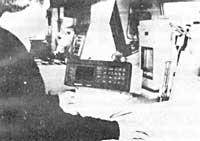
The satellite navigation system was born at John Hopkins University. It is called "transit" and since 1967 it has extended to commercial navigation. However, within a few years the "Transit" system can be replaced by another system used by the Air Force in North America.
If the autopilot is connected, the boat adapts to the preset position parameters. Steering defects are constantly corrected by the ship acting automatically on the rudder. Therefore, the builders have developed the right slogans so that they move smoothly and do not occur unnecessary friction.
To avoid collisions on the high seas, the radars carried by the ships offer great help. The autopilot receives radar signals and even changes direction or sounds the alarm temporarily. Currently, ships of more than 10,000 tons are required to position automatic radar.
The autopilot is basically an electrical circuit that connects to power the rudder when there is a steering error. When the boat returns to the right direction, the circuit turns off.
S.G. Watford The Brown company has developed an automatic pilot that sets a rolling course for the British Navy maneuvers. The width of this waveform can be programmed on demand.
The company Racal Marine Controls in Croydon has taken into account the fuel savings when making its autopilot and has sold a lot, especially to install it on Japanese ships.
In short, there are differences between automatic pilots, but almost all have similar bases. The Lemona unit establishes and controls the direction of the vessel and another stern unit slightly further controls and manages the steering motor.
The degree of influence on the correction of steering errors has also been studied in depth. Doing many grades means creating resistances and wasting more fuel.

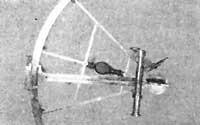
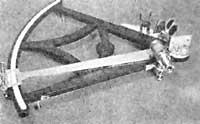
The autopilot does not alter the speed of the vessel, but sets the most accurate and suitable route to travel at sea from one point to another. This has been clearly demonstrated in recent years.
And this immediately creates the following question: Besides the helmsman, can all other sailors leave the boat alone on the high seas?
As has been said on many occasions, an oil tanker can only travel thousands of kilometers without sailors, as long as it is previously associated with a computer program. Therefore, the system consists of the ship moving on the high seas and, at the end of the trip, the crew is boarded with a helicopter. They say that if the boat also had radar to avoid collisions in the sea, navigation without sailors would be safer than the sailor.
On 15 January 1984, the Scottish coastlines were fascinated. The Danish trade "Pergo", of 745 tons, was attracted in the north of Dunbar with the lights on and the engines running. He left Norway and traveled 320 kilometers without people alone.
The story began two days earlier. The Stonehaven radio received the S.O.S.a from a ship of five sailors located east of the TOR platform. Trade was among the big waves with "serious problems". He was accompanied by other ships and a Norwegian helicopter. The helicopters were collected by the sailors and brought to land leaving only the boat. When the helicopter returned to the sea, it found no boats and they thought it had spoiled.
But the autopilot seems to have driven the boat directly to its destination. According to the heads of the Lloyd house, the ship "Pergo" left Sweden with 900 tons of fertilizers about to be discharged in Montrose and Leith and went to Scotland. Although his bow was broken by the rock, three fishermen floated at the rising tide and towed it to Leith.
An unexpected and inevitable journey, can it be repeated?
According to the engineer Willian Szupnar, from House Sperry, you can make this trip without sailors. He says there are security difficulties and people don't want that. They say the captain wants to send.
Rumors of such trips have also come from Japan. This is because automation accounts are very advanced and it is interesting for companies to reduce the number of sailors by costs.
Over the last three years, the oil company "World Progress", with 241,000 tons, has been rehearsing in a retreat between Japan and the Persian Gulf. The company wishes to receive permanent and automatic information on the position of the vessel in the Land Headquarters. In this way, you could get continuous information from your boats at sea.
Thanks to automatic satellite telex, the nautical, weather and mechanical characteristics of oil are revealed at all times. The boat also has a logitual/latitude converter that reads messages about the position sent from the ground. During the tests, the transmissions were carried out at certain times prefixed according to the geosynchronous satellites of the organization "Inmarsat". These geostable satellites are located on the Pacific and the Indian and Atlantic Oceans.
The Japanese government is also interested in the construction of vessels of few sailors. On ships few sailors want to work a lot. The Minister of Transport intends that the shipping companies carry out control systems that can be managed from land, in order to achieve more automatic maritime travel.
The engines of many Japanese ships, which have been working automatically for years, are thinking of ships that need less than twelve people in the ministry. Less than twelve people, between captain, cook and everyone.
In this environment, therefore, it is not surprising that vessels without sailors are tested. The idea of the fleet without sailors controlled from a main vessel is being studied by the "Association for the Development of Japanese Ships".
But other aspects must be taken into account. There are also the rules of the "International Maritime Organization" and other organizations, according to which in any boat there must be a minimum number of crew members. Incidents with insurance companies and safety regulations.
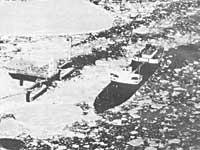
The Minister of Transport of Great Britain has denounced the misuse of automatic pilots after assessing losses. The Minister recommended that vigilantes and helmsmen should be placed in low-visibility areas, just in case they should immediately return to manual control.
The rules can be changed, of course, but meanwhile automatic navigation is spreading. Sailors are concerned and do not know whether these developments will benefit or harm them. They know that the Japanese Minister of Transport is preparing automatic entry and exit systems for ships to the port. Bill Canner also works at the University of Wales, Cardiff, in Britain.
In order to drive ships accurately, he proposed the installation of two lighthouse DME emitters that are used for the aircraft on both sides of the port. DME headlights would measure distances. As these emitters work in UHF, there would be no confusion with the radar. He also proposed placing DME emitters on the bow and stern of an ULCC to help navigators in narrow channels and maneuvers.
At the moment, on most coasts, the person is needed to drive boats. These pilots, with their studies and qualifications, are the only ones able to carry out the most complicated part of the trip.
Subsequently, on the boat you may not need personnel to drive, but at the moment you cannot do without the pilot.





